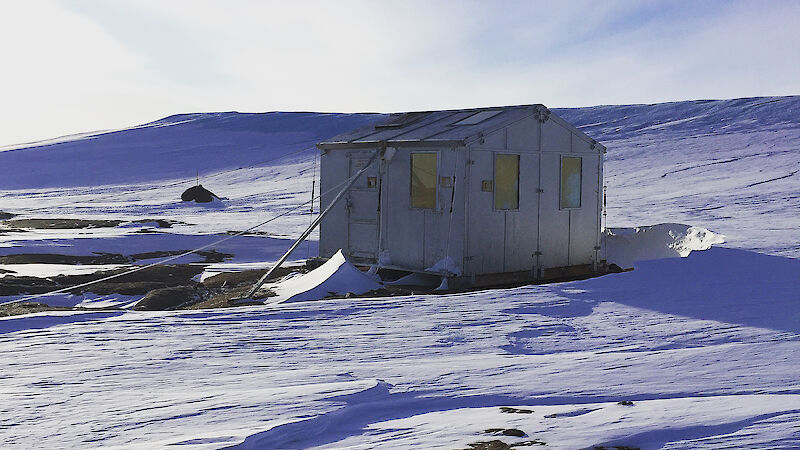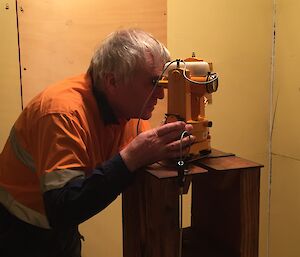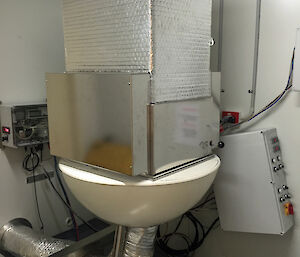The Australian Antarctic Program relies on the technical expertise of multi-talented expeditioners, wintering on Antarctic research stations, to conduct a range of year-round scientific observations and measurements. Among these activities are weekly magnetic observations for Geoscience Australia and daily seismic and radionuclide monitoring for the Australian Radiation Protection and Nuclear Safety Agency (ARPANSA)* — as Mawson Station Leader, Jenny Wressell, describes.
Magnetic measurements
One of the many jobs our communication technician, Tony Harris, is responsible for is taking weekly magnetic observations.
The magnetic absolute building is a little hut that was transported here from Heard Island in 1955. It sits in isolation from the rest of the station, towards the glacier edge. The reason for the isolation is to try and reduce any interference from metal objects on the magnetic field measurements.
Tony uses a declination-inclination magnetometer and a total field intensity magnetometer to measure both the direction and strength of the magnetic field. It takes about an hour to take the measurements, using the little window in the door to line up with a stake outside. Other measures use little marks all over the inside of the hut that people have created over the years.
It is a pretty unremarkable process, but what happens to the results is very interesting. Geoscience Australia maintains a national network of geomagnetic observatories which forms part of a global observatory network.
Geoscience Australia uses the data measured in our little hut to show how the Earth’s magnetic field changes in the Australian region due to processes taking place beneath the Earth’s surface, in the upper atmosphere and in the earth-sun space environment.
This data is then used in mathematical models of the geomagnetic field, to monitor space weather, and for scientific research. The resulting information can be used for compass-based navigation, magnetic direction finding, and to help protect communities by mitigating the potential hazards generated by magnetic storms.
Radionuclide monitoring
The Australian Radiation Protection and Nuclear Safety Agency, more generally known as ARPANSA, is the national agency that helps to support Australia’s involvement in the comprehensive nuclear test ban treaty.
The comprehensive nuclear test ban treaty was signed on the 24th September 1996 and ratified on the 9th of July 1998. Another 182 countries are also signatories of the treaty, which involved the creation of an international monitoring system that ensures compliance with the treaty.
At Mawson we have a seismic and radionuclide monitoring system that the station communication technician and station leader monitor on a daily basis.
Seismic monitors detect vibrations in the Earth’s crust. The principal use of the seismic data in the verification system is to locate seismic events and to distinguish between an underground nuclear explosion and the numerous earthquakes that occur around the globe.
The radionuclide system can detect radioactive debris from atmospheric explosions or vented by underground or underwater nuclear explosions. The presence of specific radionuclides provides unambiguous evidence of a nuclear explosion. To detect radioactive debris we go through a daily routine in the ARPANSA lab on station.
The first step is to place a piece of special filter paper into a frame and expose it via a high volume air sampler for about 24 hours. The filter paper is then crushed into a small disk and left to ‘decay’ for another 24 hours; the decay process allows naturally occurring radionuclides to be removed. Finally the disk is placed in the gamma detector to be analysed. The data is automatically transmitted to the international data centre in Vienna for collation and review.
It is an interesting process to be a part of and has been a great opportunity to learn more about Australia’s involvement with an international monitoring system.
Jenny Wressell
Station Leader, Mawson
*Australian Antarctic Science project 4092



